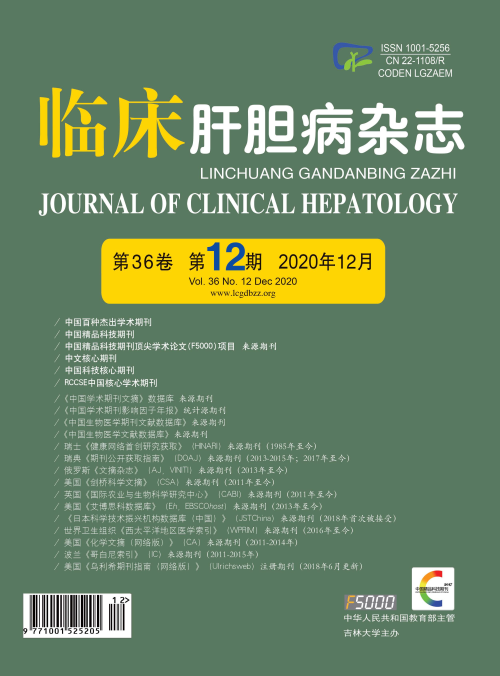|
[1] LE BERRE C,SANDBORN WJ,ARIDHI S,et al. Application of Artificial Intelligence to Gastroenterology and Hepatology[J]. Gastroenterology,2020,158(1):76-94. e2.
|
|
[2] LECUN Y,BENGIO Y,HINTON G. Deep learning[J]. Nature,2015,521(7553):436-444.
|
|
[3] FRITSCHER-RAVENS A,BRAND L,KNOFEL WT,et al. Comparison of endoscopic ultrasound-guided fine needle aspiration for focal pancreatic lesions in patients with normal parenchyma and chronic pancreatitis[J]. Am J Gastroenterol,2002,97(11):2768-2775.
|
|
[4] CASTELLANO G,BONILHA L,LI LM,et al. Texture analysis of medical images[J]. Clin Radiol,2004,59(12):1061-1069.
|
|
[5] DAS A,NGUYEN CC,LI F,et al. Digital image analysis of EUS images accurately differentiates pancreatic cancer from chronic pancreatitis and normal tissue[J]. Gastrointest Endosc,2008,67(6):861-867.
|
|
[6] ZHU M,XU C,YU J,et al. Differentiation of pancreatic cancer and chronic pancreatitis using computer-aided diagnosis of endoscopic ultrasound(EUS)images:A diagnostic test[J]. PLo S One,2013,8(5):e63820.
|
|
[7] OZKAN M,CAKIROGLU M,KOCAMAN O,et al. Age-based computer-aided diagnosis approach for pancreatic cancer on endoscopic ultrasound images[J]. Endosc Ultrasound,2016,5(2):101-107.
|
|
[8] SFTOIU A,VILMANN P,GORUNESCU F,et al. Efficacy of an artificial neural network-based approach to endoscopic ultrasound elastography in diagnosis of focal pancreatic masses[J]. Clin Gastroenterol Hepatol,2012,10(1):84-90. e1.
|
|
[9] SFTOIU A,VILMANN P,DIETRICH CF,et al. Quantitative contrast-enhanced harmonic EUS in differential diagnosis of focal pancreatic masses(with videos)[J]. Gastrointest Endosc,2015,82(1):59-69.
|
|
[10] YANG Y,CHEN H,WANG D,et al. Diagnosis of pancreatic carcinoma based on combined measurement of multiple serum tumor markers using artificial neural network analysis[J]. Chin Med J(Engl),2014,127(10):1891-1896.
|
|
[11] LIU SL,LI S,GUO YT,et al. Establishment and application of an artificial intelligence diagnosis system for pancreatic cancer with a faster region-based convolutional neural network[J].Chin Med J(Engl),2019,132(23):2795-2803.
|
|
[12] LI S,JIANG H,WANG Z,et al. An effective computer aided diagnosis model for pancreas cancer on PET/CT images[J].Comput Methods Programs Biomed,2018,165:205-214.
|
|
[13] GAO X,WANG X. Performance of deep learning for differentiating pancreatic diseases on contrast-enhanced magnetic resonance imaging:A preliminary study[J]. Diagn Interv Imaging,2020,101(2):91-100.
|
|
[14] DIEHL AM,DAY C. Cause,pathogenesis,and treatment of nonalcoholic steatohepatitis[J]. N Engl J Med,2017,377(21):2063-2072.
|
|
[15] PISCAGLIA F,CUCCHETTI A,BENLLOCH S,et al. Prediction of significant fibrosis in hepatitis C virus infected liver transplant recipients by artificial neural network analysis of clinical factors[J]. Eur J Gastroenterol Hepatol,2006,18(12):1255-1261.
|
|
[16] HASHEM S,ESMAT G,ELAKEL W,et al. Comparison of machine learning approaches for prediction of advanced liver fibrosis in chronic hepatitis C patients[J]. IEEE/ACM Trans Comput Biol Bioinform,2018,15(3):861-868.
|
|
[17] WANG D,WANG Q,SHAN F,et al. Identification of the risk for liver fibrosis on CHB patients using an artificial neural network based on routine and serum markers[J]. BMC Infect Dis,2010,10:251.
|
|
[18] WEI R,WANG J,WANG X,et al. Clinical prediction of HBV and HCV related hepatic fibrosis using machine learning[J].EBio Medicine,2018,35:124-132.
|
|
[19] RAOUFY MR,VAHDANI P,ALAVIAN SM,et al. A novel method for diagnosing cirrhosis in patients with chronic hepatitis B:Artificial neural network approach[J]. J Med Syst,2011,35(1):121-126.
|
|
[20] CHEN Y,LUO Y,HUANG W,et al. Machine-learning-based classification of real-time tissue elastography for hepatic fibrosis in patients with chronic hepatitis B[J]. Comput Biol Med,2017,89:18-23.
|
|
[21] WANG K,LU X,ZHOU H,et al. Deep learning Radiomics of shear wave elastography significantly improved diagnostic performance for assessing liver fibrosis in chronic hepatitis B:A prospective multicentre study[J]. Gut,2019,68(4):729-741.
|
|
[22] YASAKA K,AKAI H,KUNIMATSU A,et al. Liver Fibrosis:Deep convolutional neural network for staging by using gadoxetic acid-enhanced hepatobiliary phase MR images[J]. Radiology,2018,287(1):146-155.
|
|
[23] YASAKA K,AKAI H,KUNIMATSU A,et al. Deep learning for staging liver fibrosis on CT:A pilot study[J]. Eur Radiol,2018,28(11):4578-4585.
|
|
[24] SOWA JP,ATMACAKAHRAMAN A,et al. Non-invasive separation of alcoholic and non-alcoholic liver disease with predictive modeling[J]. PLo S One,2014,9(7):e101444.
|
|
[25] ESLAM M,NEWSOME PN,SARIN SK,et al. A new definition for metabolic dysfunction-associated fatty liver disease:An international expert consensus statement[J]. J Hepatol,2020,73(1):202-209.
|
|
[26] ESLAM M,SANYAL AJ,GEORGE J,et al. MAFLD:A consensus-driven proposed nomenclature for metabolic associated fatty liver disease[J]. Gastroenterology,2020,158(7):1999-2014. e1.
|
|
[27] GAO X. New thoughts about renaming nonalcoholic fatty liver disease[J]. J Clin Hepatol,2020,36(6):1201-1204.(in Chinese)高鑫.非酒精性脂肪性肝病更名带来的新思考[J].临床肝胆病杂志,2020,36(6):1201-1204.
|
|
[28] SOWA JP,HEIDER D,BECHMANN LP,et al. Novel algorithm for non-invasive assessment of fibrosis in NAFLD[J]. PLo S One,2013,8(4):e62439.
|
|
[29] YIP TC,MA AJ,WONG VW,et al. Laboratory parameterbased machine learning model for excluding non-alcoholic fatty liver disease(NAFLD)in the general population[J]. Aliment Pharmacol Ther,2017,46(4):447-456.
|
|
[30] FIALOKE S,MALARSTIG A,MILLER MR,et al. Application of machine learning methods to predict non-alcoholic steatohepatitis(NASH)in non-alcoholic fatty liver(NAFL)patients[J]. AMIA Annu Symp Proc,2018,2018:430-439.
|
|
[31] HAN D,QI XS,YU Y. An excerpt of portal hypertensive bleeding in cirrhosis:Risk stratification,diagnosis and management-2016practice guidance by the American Association for the Study of Liver Diseases[J]. J Clin Hepatol,2017,33(3):422-427.(in Chinese)韩丹,祁兴顺,于洋.《2016年美国肝病学会肝硬化门静脉高压出血的风险分层、诊断和管理实践指导》摘译[J].临床肝胆病杂志,2017,33(3):422-427.
|
|
[32] HONG WD,JI YF,WANG D,et al. Use of artificial neural network to predict esophageal varices in patients with HBV related cirrhosis[J]. Hepat Mon,2011,11(7):544-547.
|
|
[33] DONG TS,KALANI A,ABY ES,et al. Machine learningbased development and validation of a scoring system for screening high-risk esophageal varices[J]. Clin Gastroenterol Hepatol,2019,17(9):1894-1901. e1.
|













 DownLoad:
DownLoad: